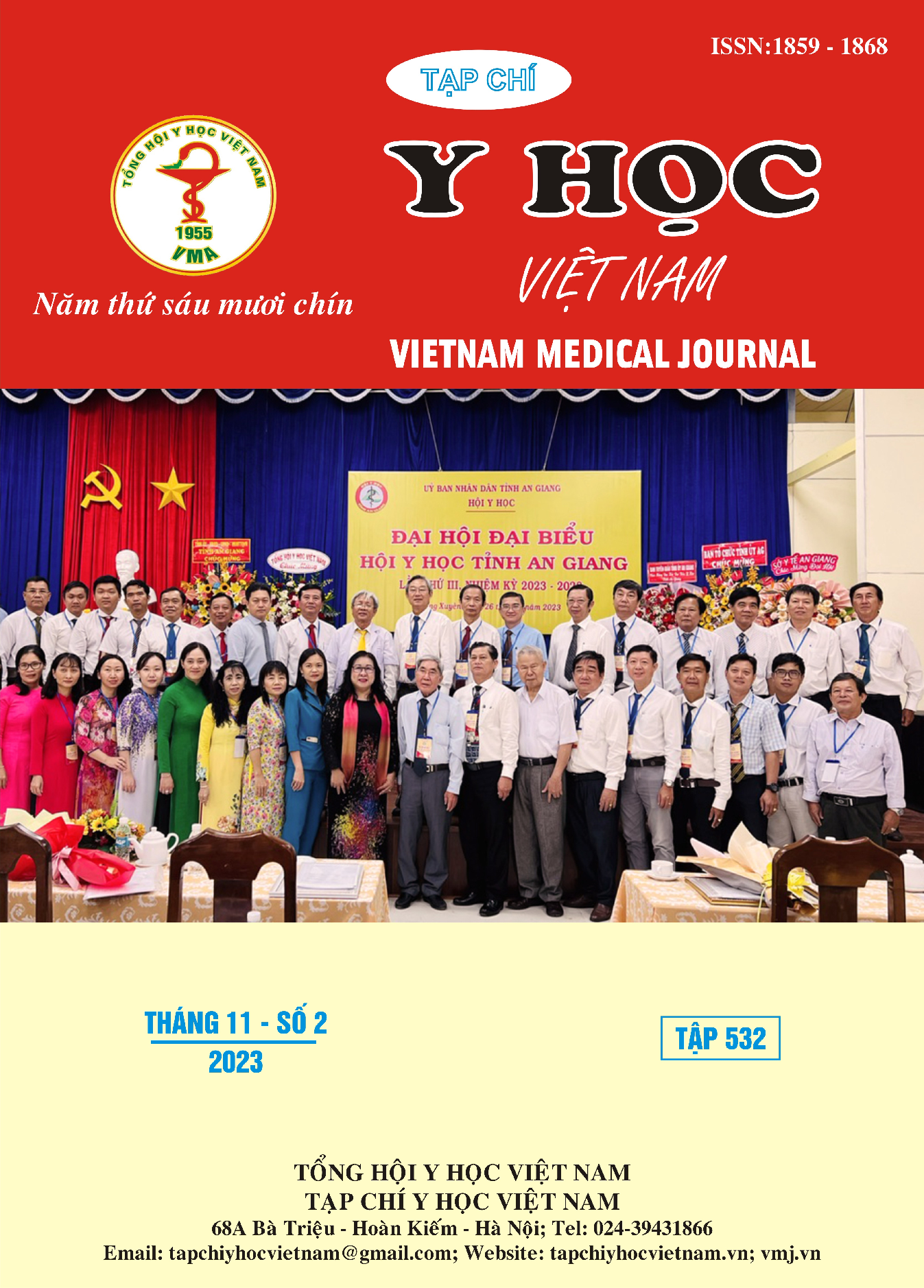ASSESSMENT OF EARLY RESULTS TREATMENT OF CHRONIC PERIORAL OCCUPATIONAL ACTIVITY WITH HYBRID PROCEDURE
Main Article Content
Abstract
Objectives: To evaluate early results in the treatment of chronic iliac artery stenosis with a hybrid procedure. Methods: A retrospective descriptive study on 31 patients with chronic iliac femoral artery
stenosis who were treated with Hybrid surgery at the Department of Vascular Surgery at Cho Ray Hospital from August 2018 to February 2022. Results: 31 patients (31 Limbs) had an average age of 69.2 ± 8.2, male majority, TASC D lesions accounted for 74%, and anesthesia 77.4%. The technical success rate is 100%, the clinical success rate is 87.1%, and the complication rate is 16.1%. Follow-up after one-year, clinical success was 77%, hemodynamic success was 80.8%, head circulation rate was 85.2%, major amputation rate was 9.7%, and the rate of significant amputation was 9.7%. The mortality rate was 12.9%. Conclusion: Hybrid procedure to treat chronic iliac femoral artery stenosis has a high success rate and is safe.
Article Details
Keywords
Hybrid procedure; Iliac-femoral chronic occlusion; Endovascular intervention.
References
2. Marston W. A., et al., "Natural history of limbs with arterial insufficiency and chronic ulceration treated without revascularization", Journal of vascular surgery, 2006, 44(1), pp. 108-114.
3. Chiu KW, Davies RS, Nightingale PG, Bradbury AW, Adam DJ. Review of direct anatomical open surgical management of atherosclerotic aorto-iliac occlusive disease.
European journal of vascular and endovascular surgery: the official journal of the European Society for Vascular Surgery. Apr 2010.39(4):460- 71. doi:10.1016/j.ejvs.2009.12.014
4. Mason RA, Smirnov VB, Newton GB, Giron F. Alternative procedures to aortobifemoral bypass grafting. The Journal of cardiovascular surgery. Mar- Apr 1989.30(2):192-7.
5. Sharma G, Scully RE, Shah SK, et al. Thirty- year trends in aortofemoral bypass for aortoiliac occlusive disease. Journal of vascular surgery. Dec 2018;68(6):1796-1804.e2. doi:10.1016/j.jvs.2018.01.067
6. Piotrowski JJ, Pearce WH, Jones DN, et al. Aortobifemoral bypass: the operation of choice for unilateral iliac occlusion? Journal of vascular surgery. Sep 1988;8(3):211-8. doi:10.1067/mva.1988.avs0080211
7. Bredahl K, Jensen LP, Schroeder TV, Sillesen H, Nielsen H, Eiberg JP. Mortality and complications after aortic bifurcated bypass procedures for chronic aortoiliac occlusive disease. Journal of vascular surgery. Jul 2015;62(1):75-82. doi:10.1016/j.jvs.2015.02.025
8. Henry M, Amor M, Ethevenot G, Henry I, Mentre B, Tzvetanov K. Percutaneous endoluminal treatment of iliac occlusions: long- term follow-up in 105 patients. Journal of endovascular surgery: the official journal of the International Society for Endovascular Surgery. Aug 1998;5(3):228-35. doi:10.1583/1074- 6218(1998)005<0228:Petoio>2.0.Co;2
9. Carnevale FC, De Blas M, Merino S, Egaña JM, Caldas JG. Percutaneous endovascular treatment of chronic iliac artery occlusion. Cardiovascular and interventional radiology. Sep-Oct 2004;27(5):447-52. doi:10.1007/s00270-004-0086-5
10. Patel MR, Conte MS, Cutlip DE, et al. Evaluation and treatment of patients with lower extremity peripheral artery disease: consensus definitions from Peripheral Academic Research Consortium (PARC). Journal of the American College of Cardiology. Mar 10 2015;65(9):931-41. doi:10.1016/j.jacc.2014.12.036


